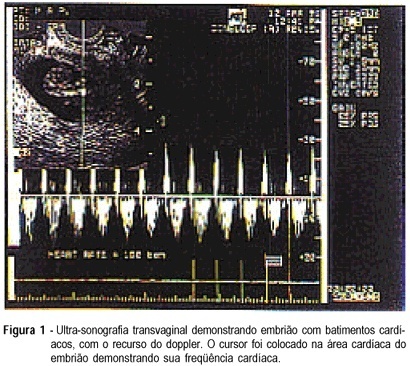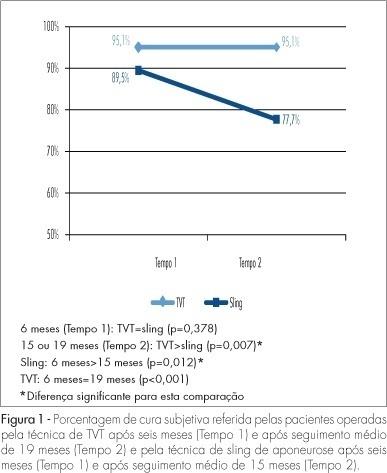Summary
Revista Brasileira de Ginecologia e Obstetrícia. 1999;21(3):126-126
Summary
Revista Brasileira de Ginecologia e Obstetrícia. 2021;43(2):126-130
The present study aimed to assess the effect of Melissa Officinalis L. (a combination of lemon balm with fennel fruit extract) compared with citalopram and placebo on the quality of life of postmenopausal women with sleep disturbance.
The present study is a randomized, double-blind, placebo clinical trial among 60 postmenopausal women with sleep disturbance who were referred to a university hospital from 2017 to 2019. The participants were randomized to receive M. Officinalis L. (500 mg daily), citalopram (30 mg) or placebo once daily for 8 weeks. The Menopause-Specific Quality of Life (MENQOL) questionnaire was self-completed by each participant at baseline and after 8 weeks of the intervention and was compared between groups.
The mean for all MENQOL domain scores were significantly improved in the M. Officinalis L. group compared with citalopram and placebo (p < 0.001). The mean ± standard deviation (SD) after 8 weeks in the M. Officinalis L., citalopram and placebo groups was 2.2 ± 0.84 versus 0.56 ± 0.58 versus 0.36 ± 0.55 in the vasomotor (p < 0.001), 1.02 ± 0.6 versus 0.28 ± 0.2 versus 0.17 ± 0.1 in the psychomotor-social (p < 0.001), 0.76 ± 0.4 versus 0.25 ± 0.1 versus 0.11 ± 0.1 in the physical and 2.3 ± 1.0 versus 0.35 ± 0.5 versus 0.41 ± 0.5 in the sexual domain, respectively.
The results revealed that M. Officinalis L. may be recommended for improving the quality of life of menopausal women with sleep disturbance. Trial registration The present study was registered by the name “Comparison of the efficacy of citalopram and compound of Asperugo procumbens and foeniculum vulgare in treatment of menopausal disorders” with the code in the Iranian Registry of Clinical Trials (IRCT).
Summary
Revista Brasileira de Ginecologia e Obstetrícia. 2010;32(3):126-132
DOI 10.1590/S0100-72032010000300005
PURPOSE: to compare serum homocysteine levels in polycystic ovary syndrome (PCOS) and non-PCOS women and correlate them with clinical, hormonal and metabolic parameters. METHODS: transverse study with carried out on 110 women, including 56 with PCOS and 54 normal controls. Patients were submitted to anamnesis, physical examination and pelvic sonograms and to the determination of homocysteine, C-reactive protein (CRP), glucose insulin, follicle-stimulating hormone (FSH), luteinizing hormone (LH), thyroid-stimulating hormone (TSH), free thyroxin (Free T4), prolactin, and testosterone. For the statistical analysis, we used the Student's t test, Pearson's product-moment correlation coefficient and the χ2 test. The "enter" method was used to determine independent association between variables. RESULTS: there was a significant increase in the average serum homocysteine levels in the group of patients with PCOS compared to controls (5.97±2.95 versus 5,17±1.33 µmol/L; p=0,015). As expected, since they are affected by PCOS, values of body mass index (BMI), waist circumference, total cholesterol, HDL cholesterol, triglycerides, insulin and HOMA were significantly different between groups. Serum homocysteine levels, BMI and PCOS were correlated. Multivariate analysis showed that PCOS, by itself, does not correlate with high serum homocysteine levels. CONCLUSIONS: PCOS women have significantly higher serum levels of homocysteine that may increase their risk for cardiovascular disease. However, other intrinsic PCOS-related factors, not identified in this study, may be responsible for this alteration.
Summary
Revista Brasileira de Ginecologia e Obstetrícia. 1998;20(3):127-135
DOI 10.1590/S0100-72031998000300002
A prospective study was performed with 42 patients with unruptured ectopic pregnancy, which intended to elaborate an index to orient the systemic treatment with the administration of a single intramuscular dose of methotrexate (50 mg/m²). Patients were monitored with beta-hCG titers on days 1, 4 and 7 after the methotrexate. When the titers of beta-hCG declined more than 15%, between days 4 and 7 after methotrexate, the patients were discharged and had an outpatient follow-up monitored with beta-hCG titers weekly until the titers were less than 5 mIU/ml, which represents success of the treatment. We prepared an index for the systemic treatment with methotrexate, with five parameters: (1) initial titers of beta-hCG; (2) aspects of the image at ultrasound (hematosalpinx, gestational sac, live embryo); (3) size of the mass; (4) free fluid in cul-de-sac; (5) collor doppler. Each parameter received a grade from 0 to 2. Grade 0 represented bad prognosis, favorable parameters received grade 2 and borderline parameters received grade one. The success rate with a single dose of methotrexate was 69.0% (29/42). The color doppler was performed in 20 of the 42 patients; in this group of 20 patients the success rate was 75.0% (15/20). In the 22 patients who were not submitted to the color doppler, the average grade of the score in the successful cases was 6.6, and in the unsuccessful it was 3.1. In the group who underwent the doppler (20 patients) the average was 7.9 in the successful cases and 4.2 in the cases that failed. In the present study the cut-off grade was 5, for most of the patients with grades above 5 had a successful treatment (15/16 - 93.75%), while grades equal or below 5 failed. The score will help to indicate the best cases for the medical treatment. We do not advise the treatment when the grade is equal or below 5. Therefore, we can predict a good evolution of the treatment when the grade is above five.

Summary
Revista Brasileira de Ginecologia e Obstetrícia. 2008;30(3):127-134
DOI 10.1590/S0100-72032008000300005
PURPOSE: to compare sling operations of aponeurosis and tension-free vaginal tape (TVT) for the correction of stress urinary incontinence (SUI) regarding: the rates of subjective and objective healing, the mobility of the bladder neck with ultrasonography, the variation of the absorbent test, the urodynamic alterations and the incidence of complications. METHODS: eighty patients with SUI were selected. Among them, 61 underwent a TVT surgery and 19, an abdominal rectum sling operation of aponeurosis. Average age, index of body mass and parity were 50.1 years old, 29.7 kg/m² and 4.1 deliveries (median=3) for the patients with aponeurosis sling, and 51.7 years old, 28.1 kg/m² and 4.1 deliveries (median=3) for the ones with TVT. All of them have undergone anamnesis, physical examination, bladder neck ultrasonography, absorbent test and urodynamic evaluation before and at least six months after the surgery. After 15 or 19 months and after about four or five years, they were again interviewed concerning the surgery results. RESULTS: after six months, 96.7% of the women with TVT and 89.5% of the ones with sling thought they were healed in the subjective evaluation. Nevertheless, after 15 to 19 months, the TVT Group kept the same subjective healing rate, while among the Sling Group the rate decreased to 77.8%. There was a significant decrease in the mobility of the neck bladder that was similar in both groups and an improvement in the absorbent test. At the end of the urodynamic study, 93.4% of the women from the TVT Group and 78.9% of the ones from the Sling Group were classified as having an objective healing. The average time of bladder probing was higher in the Sling Group. Urinary retention was observed in 42.1% of the sling cases and in 9.8% of the TVT's. The rates of late healing were 90% for TVT and 55.6% for sling. CONCLUSIONS: TVT surgery provided better subjective healing after 15 or 19 months, but the rate of objective healing was the same in both techniques at that time. Among the complications detected, the urinary retention was higher in the Sling Group, in the post-surgery period.

Summary
Revista Brasileira de Ginecologia e Obstetrícia. 2015;37(3):127-132
DOI 10.1590/SO100-720320150005120
To describe the maternal and fetal outcomes with the use of the Foley catheter for induction of labor in high-risk pregnant women with previous caesarean section.
An interventive and descriptive study was conducted from November 2013 to June 2014. A total of 39 pregnant women at term, with a live fetus, cephalic presentation, estimated fetal weight <4,000 g, with previous cesarean section, medical indications for induction of labor, Bishop score ≤6 and amniotic fluid index >5 cm were included. A number 16F Foley catheter was introduced for a maximum of 24 hours, and was considered to be satisfactory when the patient began labor within 24 hours.
Labor was successfully induced in 79.5% of pregnant women. Nine women achieved vaginal delivery (23.1%), with a frequency of 18% of vaginal births occurring within 24 hours. The main indications for the induction of labor were hypertensive disorders (75%). The mean interval between the placement of the Foley catheter and the beginning of labor and delivery were 8.7±7.1 and 14.7±9.8 hours, respectively. Meconium-stained amniotic fluid was observed in two patients; and an Apgar score <7 in the first minute was detected in 5 newborns (12.8%).
The Foley catheter is an alternative for the induction of labor in women with previous caesarean section, despite the low vaginal delivery rate.
Summary
Revista Brasileira de Ginecologia e Obstetrícia. 2000;22(3):127-127
Summary
Revista Brasileira de Ginecologia e Obstetrícia. 2023;45(3):127-133
To assess the maternal blood levels of fatty acids (FAs) in pregnancies with fetal growth restriction (FGR).
This prospective cross-sectional study included pregnant women with gestational age between 26 and 37 + 6 weeks with FGR and appropriate for gestational age (AGA) fetuses. The levels of saturated, trans, monounsaturated, and polyunsaturated FAs were measured using centrifugation and liquid chromatography. The Student’s t-test, Mann-Whitney test, and general linear model, with gestational age and maternal weight as covariants, were used to compare FA levels and the FGR and AGA groups. The Chi-square was used to evaluate the association between groups and studied variables.
Maternal blood sample was collected from 64 pregnant women, being 24 FGR and 40 AGA. A weak positive correlation was found between the palmitoleic acid level and maternal weight (r = 0.285, p = 0.036). A weak negative correlation was found between the gamma-linoleic acid level and gestational age (r = −0.277, p = 0.026). The median of the elaidic acid level (2.3 vs. 4.7ng/ml, p = 0.045) and gamma-linoleic acid (6.3 vs. 6.6ng/ml, p = 0.024) was significantly lower in the FGR than the AGA group. The palmitoleic acid level was significantly higher in the FGR than AGA group (50.5 vs. 47.6ng/ml, p = 0.033).
Pregnant women with FGR had lower elaidic acid and gamma-linoleic acid levels and higher palmitoleic acid levels than AGA fetuses.